|
Triple Junctions
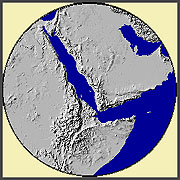
The above boundaries (divergent, convergent and transform) are all places
where two plates meet. Triple junctions, places where three plates
come together, are also common. They are found at the end of plate boundary
segments. The geometry of all these systems is made all the more complex
because all motion takes place along the curved surface of the earth.
INTRA-PLATE ACTIVITY
Hot Spots
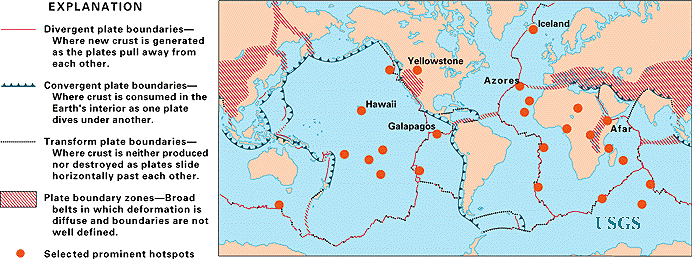
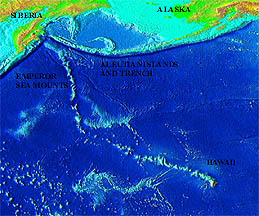 Hot
Spots are places where rising plumes of asthenosphere "melt" a hole into
the lithosphere, resulting in vulcanism directly above the hot spot. As
the lithospheric plate moves, it carries the volcano with it. Because it
no longer has a supply of magma, the volcano is no longer active, and a
new volcano erupts above the hot spot. This results in a long string of
volcanos and sea mounts (when the volcano subsides below sea level) that
indicate past plate motion over the hot spot. The classical example of
this is the Hawaiian Island chain and the Emperor sea mounts. Note the
dog-leg in the long string of volcanos that indicates that the Pacific
Plate changed the direction of its motion. Hot
Spots are places where rising plumes of asthenosphere "melt" a hole into
the lithosphere, resulting in vulcanism directly above the hot spot. As
the lithospheric plate moves, it carries the volcano with it. Because it
no longer has a supply of magma, the volcano is no longer active, and a
new volcano erupts above the hot spot. This results in a long string of
volcanos and sea mounts (when the volcano subsides below sea level) that
indicate past plate motion over the hot spot. The classical example of
this is the Hawaiian Island chain and the Emperor sea mounts. Note the
dog-leg in the long string of volcanos that indicates that the Pacific
Plate changed the direction of its motion.
Earthquakes and plate tectonics.
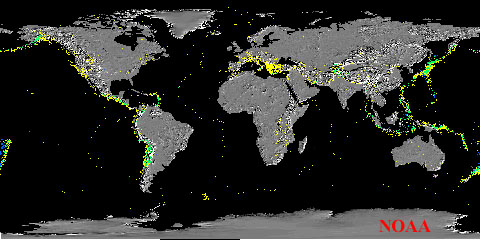 This
is a NOAA plot of earthquakes [for a more detailed view (760K file) click
on the image itself]. Yellow means shallow focus; green intermediate focus;
and blue, deep focus earthquakes. Note that they tend to occur in belts,
especially along present plate margins. Shallow focus earthquakes tend
to occur within plates and along all boundaries. Greater focus depths
are associated with convergent boundaries along subduction zones. This
is a NOAA plot of earthquakes [for a more detailed view (760K file) click
on the image itself]. Yellow means shallow focus; green intermediate focus;
and blue, deep focus earthquakes. Note that they tend to occur in belts,
especially along present plate margins. Shallow focus earthquakes tend
to occur within plates and along all boundaries. Greater focus depths
are associated with convergent boundaries along subduction zones.
Volcanos and Plate Tectonics
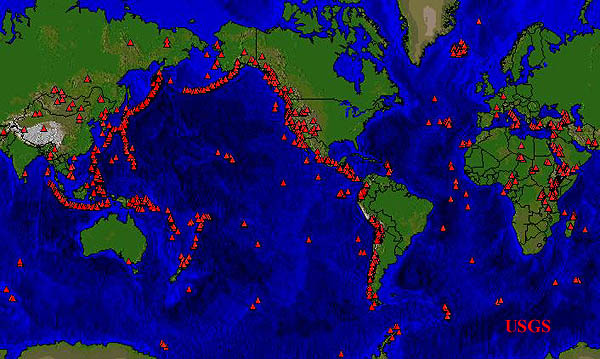 Just as for earthquakes,
volcanos occur along plate margins and hot spots. A very prominent group
of volcanos occurs along the subduction zones rimming the Pacific plate
and have justifiably given the Pacific rim the name of Ring of Fire. Just as for earthquakes,
volcanos occur along plate margins and hot spots. A very prominent group
of volcanos occurs along the subduction zones rimming the Pacific plate
and have justifiably given the Pacific rim the name of Ring of Fire.
Summary Chart of Plate Tectonics Features |

